What is fucus. Fucus: The Fascinating World of Brown Algae and Its Diverse Applications
What is Fucus and how does it impact marine ecosystems. Why is Fucus important in scientific research and commercial applications. How does Fucus contribute to coastal biodiversity and ecosystem health. What are the potential medicinal uses of Fucus species.
The Biology and Ecology of Fucus: A Keystone Genus of Brown Algae
Fucus is a genus of brown algae that plays a crucial role in marine ecosystems. These seaweeds are commonly found along rocky coastlines in temperate and arctic regions, where they form dense underwater forests known as kelp beds. Fucus species are characterized by their branching, strap-like thalli (plant bodies) and air bladders that help them stay buoyant in the water.
The most well-known species of this genus include Fucus vesiculosus (bladder wrack), Fucus serratus (serrated wrack), and Fucus spiralis (spiral wrack). These algae are adapted to survive in the harsh intertidal zone, where they are exposed to alternating periods of submersion and desiccation due to tidal cycles.

Ecological Importance of Fucus
Fucus species play a vital role in coastal ecosystems by:
- Providing habitat and food for various marine organisms
- Serving as nursery grounds for juvenile fish and invertebrates
- Contributing to primary production and carbon sequestration
- Stabilizing shorelines and reducing coastal erosion
- Filtering nutrients and pollutants from seawater
How do Fucus algae adapt to their intertidal habitat? These remarkable organisms have developed several strategies to cope with the challenging conditions of their environment. They can withstand periods of desiccation by producing protective mucilages and adjusting their metabolic processes. Additionally, their tough, leathery texture helps them resist wave action and grazing by herbivores.
The Chemical Composition of Fucus: A Treasure Trove of Bioactive Compounds
Fucus species are rich in a variety of bioactive compounds that have attracted significant scientific interest. These include:
- Polysaccharides (e.g., fucoidan, alginic acid)
- Polyphenols (e.g., phlorotannins)
- Pigments (e.g., fucoxanthin)
- Minerals (e.g., iodine, potassium, calcium)
- Vitamins (e.g., vitamin C, vitamin E)
The unique chemical profile of Fucus algae contributes to their potential applications in various fields, including medicine, nutrition, and biotechnology.
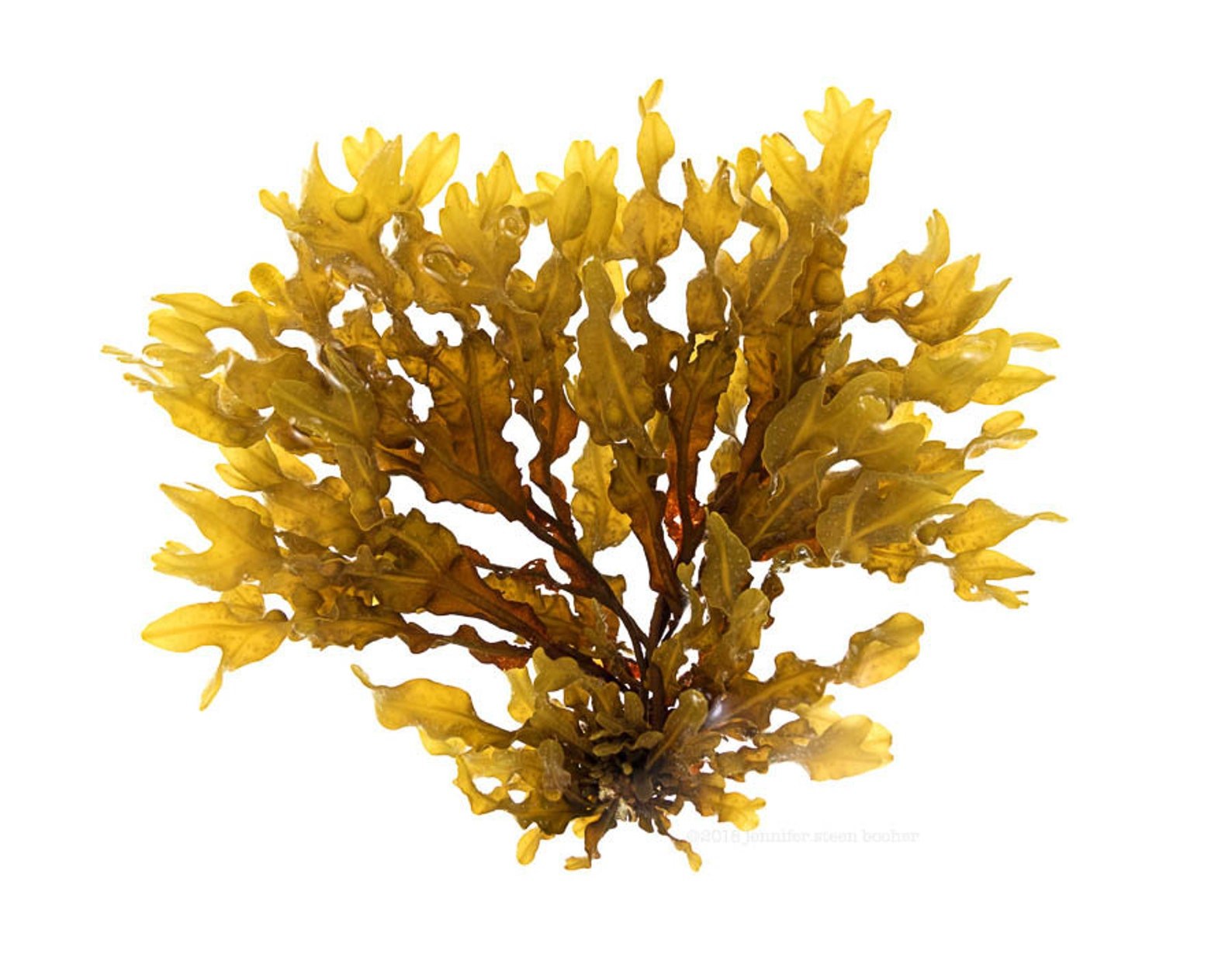
Fucoidan: A Promising Polysaccharide
Fucoidan, a sulfated polysaccharide found in Fucus species, has garnered particular attention due to its diverse biological activities. Research has shown that fucoidan may possess:
- Anti-inflammatory properties
- Antioxidant effects
- Anticoagulant activity
- Antitumor potential
- Immunomodulatory functions
These properties make fucoidan a promising candidate for the development of new therapeutic agents and nutraceuticals.
Medicinal Applications of Fucus: From Traditional Remedies to Modern Research
Fucus species have a long history of use in traditional medicine, particularly in coastal communities. In recent years, scientific research has begun to explore the potential health benefits of these algae and their extracts.
Thyroid Health and Iodine Content
Fucus vesiculosus, also known as bladderwrack, has been traditionally used to support thyroid function due to its high iodine content. Iodine is an essential mineral for the production of thyroid hormones. However, it’s important to note that excessive iodine intake can be harmful, and the use of Fucus supplements for thyroid disorders should be approached with caution and under medical supervision.
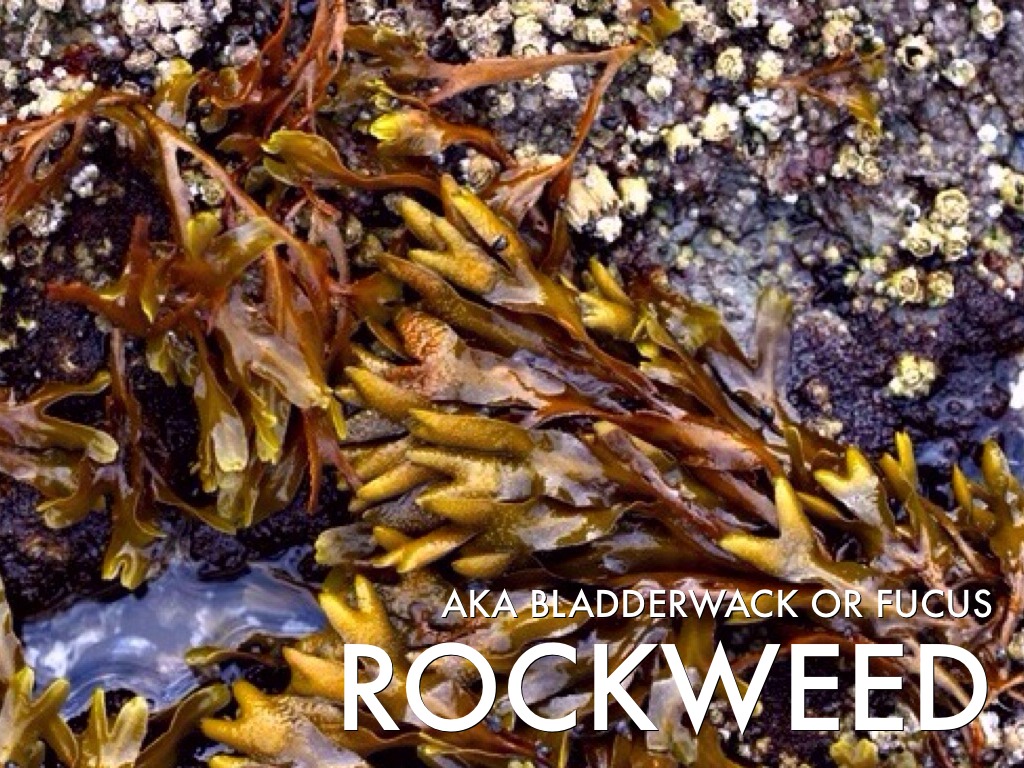
Weight Management and Metabolism
Some studies have investigated the potential of Fucus extracts in supporting weight management and metabolic health. The algae’s high fiber content and bioactive compounds may influence factors such as:
- Appetite regulation
- Fat metabolism
- Blood glucose control
- Gut microbiota composition
While these findings are promising, more research is needed to fully understand the effects of Fucus on human metabolism and to determine safe and effective dosages.
Skin Health and Cosmetic Applications
Fucus extracts have gained popularity in the cosmetic industry due to their potential benefits for skin health. The algae’s antioxidant and moisturizing properties may help:
- Protect against UV damage
- Improve skin hydration
- Reduce the appearance of fine lines and wrinkles
- Support skin barrier function
Many skincare products now incorporate Fucus extracts as active ingredients, capitalizing on these potential benefits.
Fucus in Sustainable Agriculture: Harnessing the Power of Seaweed
The agricultural sector has shown increasing interest in the use of Fucus and other seaweed species as biostimulants and soil conditioners. These marine algae offer several potential benefits for crop production:

- Improved soil structure and water retention
- Enhanced nutrient uptake by plants
- Increased resistance to abiotic stress (e.g., drought, salinity)
- Promotion of beneficial soil microorganisms
- Natural pest and disease control
How can Fucus-based products contribute to sustainable agriculture? By reducing the reliance on synthetic fertilizers and pesticides, seaweed-based agricultural inputs can help minimize environmental impacts and support the transition to more sustainable farming practices.
Seaweed Extracts as Biostimulants
Fucus extracts, rich in bioactive compounds such as polysaccharides and plant growth regulators, have shown promise as biostimulants. These natural products can enhance crop growth, yield, and quality by:
- Stimulating root development
- Improving nutrient assimilation
- Enhancing photosynthetic efficiency
- Increasing tolerance to environmental stresses
The use of seaweed-based biostimulants aligns with the growing demand for organic and sustainable agricultural solutions.
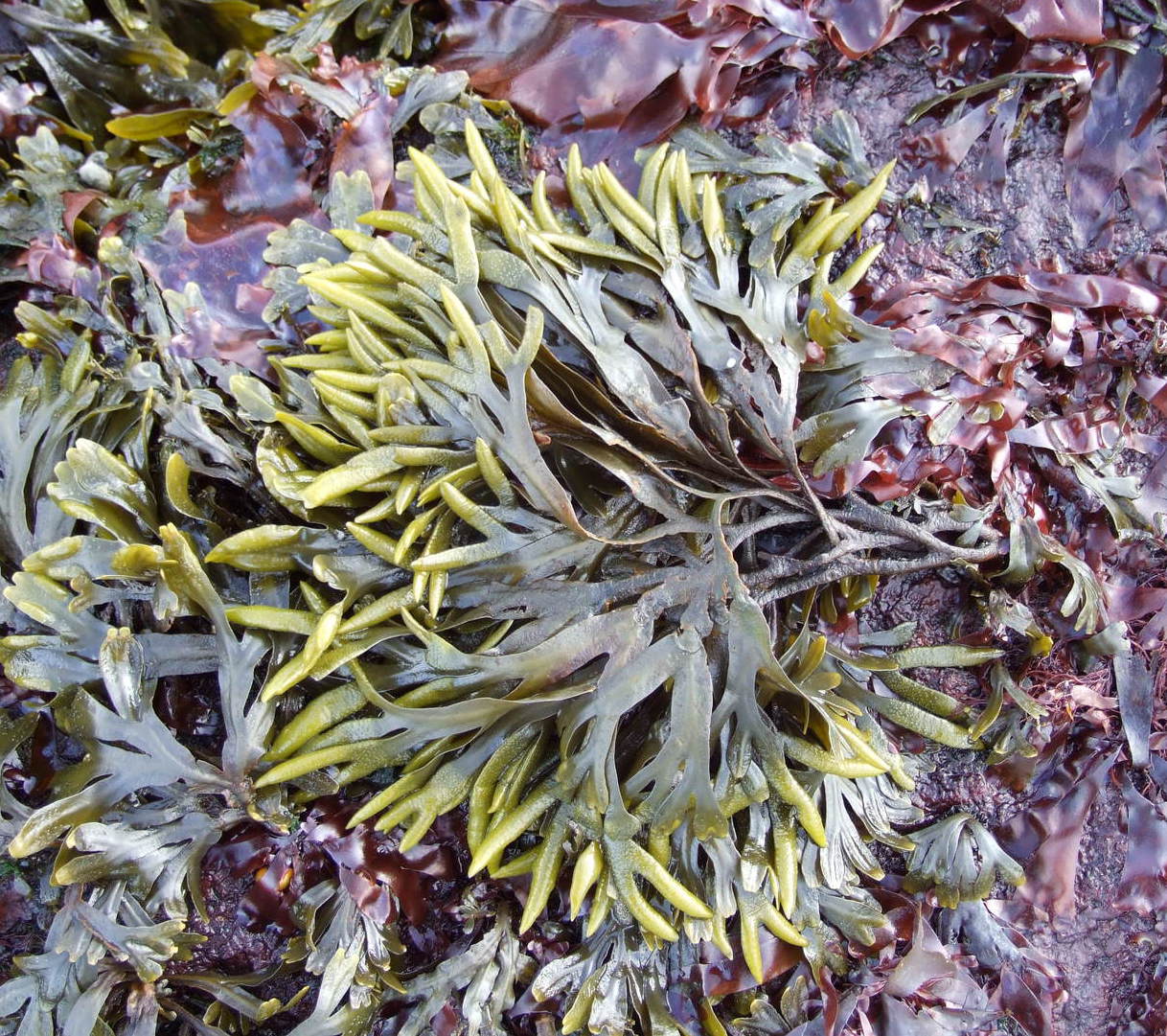
Fucus in Biotechnology: Innovations and Future Prospects
The unique properties of Fucus species have attracted interest from the biotechnology sector, leading to innovative applications and research directions.
Biorefinery Concepts
Fucus algae are being explored as feedstock for biorefineries, where multiple valuable products can be extracted from a single biomass source. This approach maximizes resource utilization and supports the development of a circular bioeconomy. Potential products from Fucus biorefineries include:
- Biofuels (e.g., bioethanol, biogas)
- High-value chemicals (e.g., antioxidants, pigments)
- Functional food ingredients
- Bioplastics and biodegradable packaging materials
Bioremediation and Environmental Applications
The ability of Fucus species to absorb and accumulate various elements from seawater has led to their investigation for bioremediation purposes. These algae show potential for:
- Removing heavy metals from contaminated waters
- Sequestering excess nutrients in coastal ecosystems
- Mitigating ocean acidification through carbon uptake
How can Fucus contribute to environmental restoration efforts? By harnessing the natural abilities of these algae, researchers and environmental managers can develop sustainable solutions for water purification and ecosystem rehabilitation.
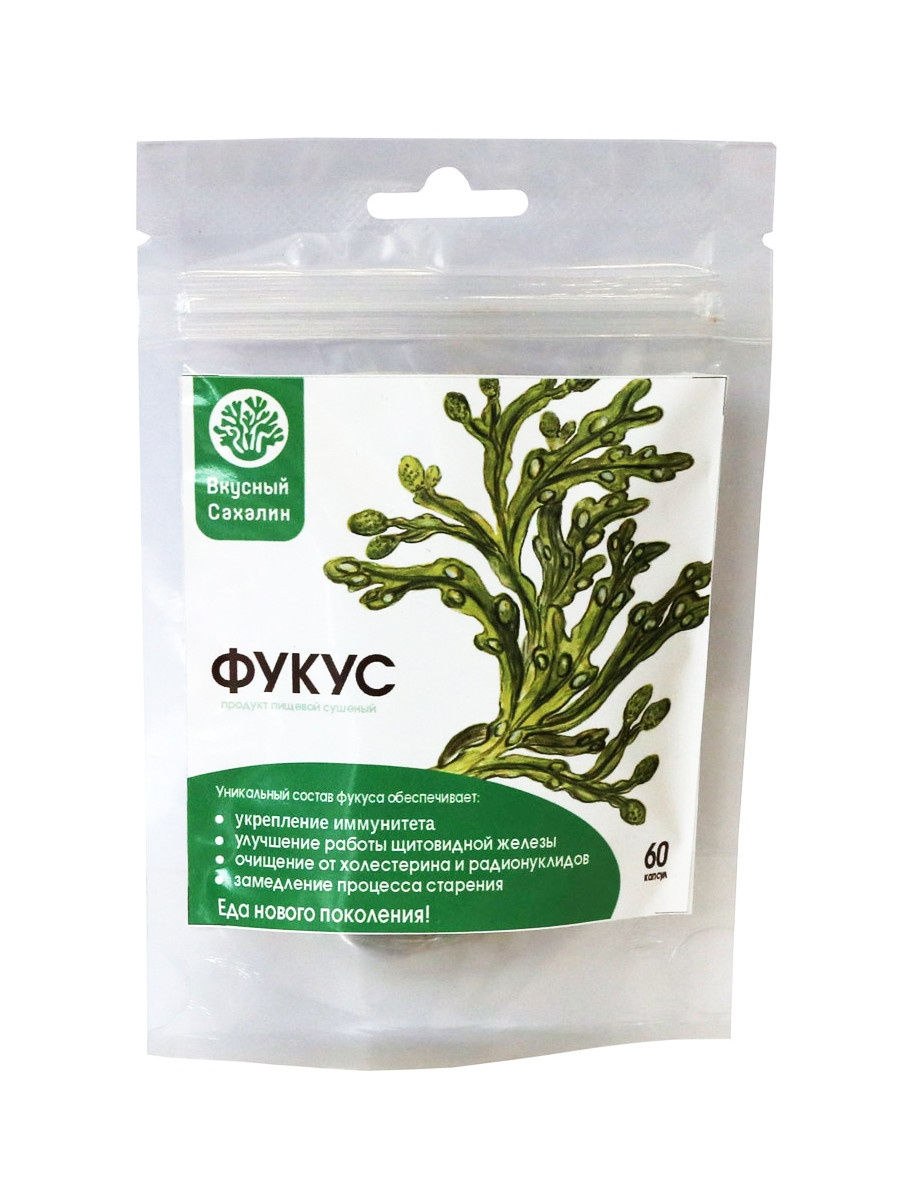
Challenges and Considerations in Fucus Research and Utilization
While the potential applications of Fucus species are numerous and exciting, several challenges and considerations must be addressed to ensure sustainable and responsible utilization of these marine resources.
Sustainable Harvesting and Cultivation
As demand for Fucus-derived products increases, there is a need to develop sustainable harvesting practices and cultivation methods. Over-harvesting of wild populations can have detrimental effects on coastal ecosystems. Aquaculture of Fucus species offers a potential solution, but challenges remain in optimizing growth conditions and scaling up production.
Standardization and Quality Control
The chemical composition of Fucus algae can vary significantly depending on factors such as:
- Species and genetic variation
- Environmental conditions (e.g., water temperature, nutrient availability)
- Seasonal changes
- Harvesting and processing methods
This variability poses challenges for the standardization and quality control of Fucus-based products, particularly in the context of medicinal and nutraceutical applications.

Regulatory Considerations
The use of Fucus in food, supplements, and medical products is subject to various regulatory frameworks across different countries. Ensuring compliance with safety standards and obtaining necessary approvals can be complex and time-consuming, potentially limiting the commercialization of Fucus-derived innovations.
The Future of Fucus Research: Emerging Trends and Opportunities
As our understanding of Fucus biology and chemistry continues to grow, new avenues for research and application are emerging. Some promising areas of investigation include:
Genomics and Molecular Biology
Advances in genomic and molecular techniques are providing new insights into the genetic basis of Fucus adaptations and metabolic pathways. This knowledge can inform:
- Selective breeding programs for improved traits
- Metabolic engineering for enhanced production of target compounds
- Development of molecular markers for species identification and quality control
Microbiome Research
The complex interactions between Fucus algae and their associated microbiomes are gaining attention. Understanding these relationships could lead to:
.jpg)
- Novel strategies for improving algal growth and resilience
- Discovery of new bioactive compounds produced by associated microorganisms
- Insights into the ecological roles of Fucus in marine ecosystems
Nanotechnology Applications
The unique properties of Fucus-derived compounds are being explored in the field of nanotechnology. Potential applications include:
- Development of nanocarriers for drug delivery
- Creation of biocompatible nanofibers for tissue engineering
- Fabrication of biosensors and diagnostic tools
How might nanotechnology enhance the utilization of Fucus-derived compounds? By manipulating materials at the nanoscale, researchers can potentially improve the efficacy and delivery of bioactive components, opening up new possibilities in medicine and biotechnology.
Climate Change Research
As marine ecosystems face increasing pressure from climate change, studying Fucus species can provide valuable insights into:
- The impacts of ocean warming and acidification on coastal habitats
- Potential shifts in species distributions and ecosystem dynamics
- The role of macroalgae in carbon sequestration and climate mitigation
Understanding how Fucus populations respond to changing environmental conditions can inform conservation strategies and help predict future changes in coastal ecosystems.
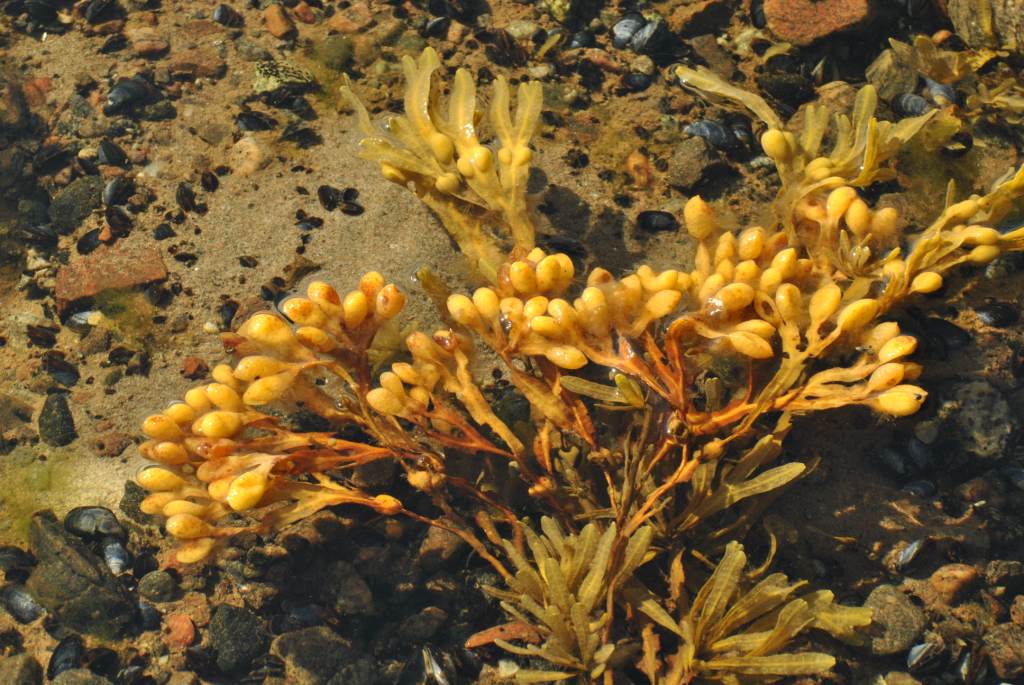
In conclusion, the genus Fucus represents a fascinating and valuable group of marine algae with diverse applications and significant ecological importance. As research continues to uncover the potential of these remarkable organisms, it is crucial to balance exploitation with conservation to ensure the sustainable use of Fucus resources for generations to come. The future of Fucus research holds exciting possibilities for innovation in fields ranging from medicine and agriculture to environmental management and biotechnology.
Fucus | genus of brown algae
- Entertainment & Pop Culture
- Geography & Travel
- Health & Medicine
- Lifestyles & Social Issues
- Literature
- Philosophy & Religion
- Politics, Law & Government
- Science
- Sports & Recreation
- Technology
- Visual Arts
- World History
- On This Day in History
- Quizzes
- Podcasts
- Dictionary
- Biographies
- Summaries
- Top Questions
- Infographics
- Demystified
- Lists
- #WTFact
- Companions
- Image Galleries
- Spotlight
- The Forum
- One Good Fact
- Entertainment & Pop Culture
- Geography & Travel
- Health & Medicine
- Lifestyles & Social Issues
- Literature
- Philosophy & Religion
- Politics, Law & Government
- Science
- Sports & Recreation
- Technology
- Visual Arts
- World History
- Britannica Explains
In these videos, Britannica explains a variety of topics and answers frequently asked questions.
- Britannica Classics
Check out these retro videos from Encyclopedia Britannica’s archives. - Demystified Videos
In Demystified, Britannica has all the answers to your burning questions. - #WTFact Videos
In #WTFact Britannica shares some of the most bizarre facts we can find. - This Time in History
In these videos, find out what happened this month (or any month!) in history.
- Student Portal
Britannica is the ultimate student resource for key school subjects like history, government, literature, and more. - COVID-19 Portal
While this global health crisis continues to evolve, it can be useful to look to past pandemics to better understand how to respond today. - 100 Women
Britannica celebrates the centennial of the Nineteenth Amendment, highlighting suffragists and history-making politicians. - Saving Earth
Britannica Presents Earth’s To-Do List for the 21st Century. Learn about the major environmental problems facing our planet and what can be done about them!
Learn about the major environmental problems facing our planet and what can be done about them! - SpaceNext50
Britannica presents SpaceNext50, From the race to the Moon to space stewardship, we explore a wide range of subjects that feed our curiosity about space!
Table of Contents
Introduction
Fast Facts
Related Content
Fucus Vesiculosus: MedlinePlus Supplements
To use the sharing features on this page, please enable JavaScript.
Fucus vesiculosus is a type of brown seaweed that grows in the Baltic Sea, Atlantic Ocean, and North Pacific Ocean. The whole plant is used as medicine.
Fucus vesiculosus contains varying amounts of iodine. Iodine might help prevent or treat some thyroid disorders. Fucus vesiculosus also might have antidiabetic effects and affect hormone levels.
People use Fucus vesiculosus for thyroid disorders, obesity, aging skin, constipation, and many other conditions, but there is no good scientific evidence to support these uses.
Don’t confuse Fucus vesiculosus with algin, bladderwort, blue-green algae, ecklonia cava, or laminaria.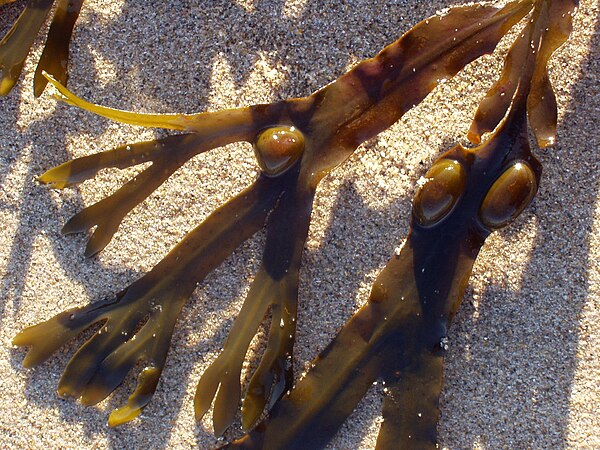 These are not the same.
These are not the same.
There is interest in using Fucus vesiculosus for a number of purposes, but there isn’t enough reliable information to say whether it might be helpful.
When taken by mouth: Fucus vesiculosus is possibly unsafe. It can contain high concentrations of iodine. Taking large amounts of iodine can cause or worsen some thyroid problems. It might also contain heavy metals, which can cause heavy metal poisoning.
When applied to the skin: Fucus vesiculosus is possibly safe.
Special precautions & warnings:
Pregnancy and breast-feeding: Fucus vesiculosus is possibly unsafe to use while pregnant or breast-feeding because it might contain iodine and heavy metals. Don’t use it.
Iodine allergy: Fucus vesiculosus may contain large amounts of iodine, which could cause an allergic reaction in sensitive people. Don’t use it.
Surgery: Fucus vesiculosus might slow blood clotting. It might cause extra bleeding during and after surgery. Stop taking Fucus vesiculosus at least 2 weeks before surgery.
Stop taking Fucus vesiculosus at least 2 weeks before surgery.
Thyroid disorders: Fucus vesiculosus may contain large amounts of iodine. Long-term use or high doses of iodine might make certain thyroid disorders worse. Also, people with autoimmune thyroid disease might be especially sensitive to the harmful effects of iodine.
- Moderate
- Be cautious with this combination.
- Lithium
- Fucus vesiculosus can contain large amounts of iodine. Large amounts of iodine can change thyroid function. Lithium can also change thyroid function. Taking Fucus vesiculosus along with lithium might increase the risk of thyroid function changes.
- Medications for an overactive thyroid (Antithyroid drugs)
- Fucus vesiculosus can contain large amounts of iodine. Iodine can increase or decrease thyroid function. Taking Fucus vesiculosus along with medications for an overactive thyroid might change the effects of these medications.
- Medications that slow blood clotting (Anticoagulant / Antiplatelet drugs)
- Fucus vesiculosus might slow blood clotting.
 Taking Fucus vesiculosus along with medications that also slow blood clotting might increase the risk of bruising and bleeding.
Taking Fucus vesiculosus along with medications that also slow blood clotting might increase the risk of bruising and bleeding. - Minor
- Be watchful with this combination.
- Medications changed by the liver (Cytochrome P450 2C8 (CYP2C8) substrates)
- Some medications are changed and broken down by the liver. Fucus vesiculosus might change how quickly the liver breaks down these medications. This could change the effects and side effects of these medications.
- Medications changed by the liver (Cytochrome P450 2C9 (CYP2C9) substrates)
- Some medications are changed and broken down by the liver. Fucus vesiculosus might change how quickly the liver breaks down these medications. This could change the effects and side effects of these medications.
- Medications changed by the liver (Cytochrome P450 2D6 (CYP2D6) substrates)
- Some medications are changed and broken down by the liver. Fucus vesiculosus might change how quickly the liver breaks down these medications.
 This could change the effects and side effects of these medications.
This could change the effects and side effects of these medications. - Medications changed by the liver (Cytochrome P450 3A4 (CYP3A4) substrates)
- Some medications are changed and broken down by the liver. Fucus vesiculosus might change how quickly the liver breaks down these medications. This could change the effects and side effects of these medications.
- Herbs and supplements that might slow blood clotting
- Fucus vesiculosus might slow blood clotting and increase the risk of bleeding. Taking it with other supplements with similar effects might increase the risk of bleeding in some people. Examples of supplements with this effect include garlic, ginger, ginkgo, nattokinase, and Panax ginseng.
- Strontium
- Fucus vesiculosus contains alginate. Alginate can reduce the absorption of strontium. Taking Fucus vesiculosus with strontium supplements might reduce the absorption of strontium.
- There are no known interactions with foods.

There isn’t enough reliable information to know what an appropriate dose of Fucus vesiculosus might be. Fucus vesiculosus might also be unsafe because it might contain high amounts of iodine and heavy metals. Speak with a healthcare provider before using.
Black Tang, Bladder Fucus, Bladder Wrack, Bladderwrack, Blasentang, Cutweed, Dyer’s Fucus, Fucus Vésiculeux, Goémon, Kelp, Kelpware, Kelp-Ware, Ocean Kelp, Quercus Marina, Red Fucus, Rockwrack, Sea Kelp, Sea Oak, Seawrack, Varech, Varech Vésiculeux.
To learn more about how this article was written, please see the Natural Medicines Comprehensive Database methodology.
- Murray M, Dordevic AL, Cox K, Scholey A, Ryan L, Bonham MP. Twelve weeks’ treatment with a polyphenol-rich seaweed extract increased HDL cholesterol with no change in other biomarkers of chronic disease risk in overweight adults: A placebo-controlled randomized trial. J Nutr Biochem 2021;96:108777. View abstract.

- Heavisides E, Rouger C, Reichel AF, et al. Seasonal Variations in the Metabolome and Bioactivity Profile of Fucus vesiculosus Extracted by an Optimised, Pressurised Liquid Extraction Protocol. Mar Drugs. 2018;16. pii: E503. View abstract.
- Derosa G, Cicero AFG, D’Angelo A, Maffioli P. Ascophyllum nodosum and Fucus vesiculosus on glycemic status and on endothelial damage markers in dysglicemic patients. Phytother Res. 2019;33:791-797. View abstract.
- Mathew L, Burney M, Gaikwad A, et al. Preclinical evaluation of safety of fucoidan extracts from Undaria pinnatifida and Fucus vesiculosus for use in cancer treatment. Integr Cancer Ther 2017;16:572-84. View abstract.
- Wikström SA, Kautsky L. Structure and diversity of invertebrate communities in the presence and absence of canopy-forming Fucus vesiculosus in the Baltic Sea. Estuarine Coastal Shelf Sci 2007;72:168-176.
- Torn K, Krause-Jensen D, Martin G. Present and past depth distribution of bladderwrack (Fucus vesiculosus) in the Baltic Sea.
 Aquatic Botany 2006;84:53-62.
Aquatic Botany 2006;84:53-62. - Hoang TD, Mai VQ, Clyde PW, Shakir MK. Over-the-counter-drug-induced thyroid disorders. Endocr Pract. 2013 Mar-Apr;19:268-74. View abstract.
- Alraei, RG. Herbal and Dietary Supplements for Weight Loss. Topics in Clinical Nutrition. 2010;25:136-150.
- Bradley MD, Nelson A Petticrew M Cullum N Sheldon T. Dressing for pressure sores. Cochrane Library 2011;0:0.
- Schreuder SM, Vermeulen H Qureshi MA Ubbink DT. Dressings and topical agents for donor sites of split-thickness skin grafts. JOURNAL 2009;0:0.
- Martyn-St James M., O’Meara S. Foam dressings for venous leg ulcers. Cochrane Library. 2012;0:0.
- Ewart, S Girouard G. Tiller C. et al. Antidiabetic Activities of a Seaweed Extract. Diabetes. 2004;53(Supplement 2):A509.
- Lindsey, H. Use of Botanicals for Cancer: Systematic Research Required to Determine Role. Oncology Times. 2005;27:52-55.
- Le Tutour B, Benslimane F, Gouleau MP, and et al. Antioxidant and pro-oxidant activities of the brown algae, Laminaria digitata, Himanthalia elongata, Fucus vesiculosus, Fucus serratus and Ascophyllum nodosum.
 J Applied Phycology 1998;10:121-129.
J Applied Phycology 1998;10:121-129. - Eliason, B. C. Transient hyperthyroidism in a patient taking dietary supplements containing kelp. J Am Board Fam.Pract. 1998;11:478-480. View abstract.
- Gaigi, S., Elati, J., Ben, Osman A., and Beji, C. [Experimental study of the effects of seaweed in the treatment of obesity]. Tunis Med. 1996;74:241-243. View abstract.
- Drozhzhina, V. A., Fedorov, IuA, Blokhin, V. P., Soboleva, T. I., and Kazakova, O. V. [The use of dental elixirs based on natural biologically active substances in the treatment and prevention of periodontal diseases]. Stomatologiia (Mosk) 1996;Spec No:52-53. View abstract.
- Yamamoto I, Nagumo T, Fujihara M, and et al. Antitumor effect of seaweeds. II. Fractionation and partial characterization of the polysaccharide with antitumor activity from Sargassum fulvellum. Jpn.J Exp Med 1977;47:133-140. View abstract.
- Monego, E. T., Peixoto, Mdo R., Jardim, P. C., Sousa, A. L., Braga, V. L., and Moura, M.
 F. [Different therapies in the treatment of obesity in hypertensive patients]. Arq Bras.Cardiol. 1996;66:343-347. View abstract.
F. [Different therapies in the treatment of obesity in hypertensive patients]. Arq Bras.Cardiol. 1996;66:343-347. View abstract. - Riou D, Colliec-Jouault S, Pinczon du Sel D, and et al. Antitumor and antiproliferative effects of a fucan extracted from ascophyllum nodosum against a non-small-cell bronchopulmonary carcinoma line. Anticancer Res 1996;16(3A):1213-1218. View abstract.
- Sakata, T. A very-low-calorie conventional Japanese diet: its implications for prevention of obesity. Obes.Res. 1995;3 Suppl 2:233s-239s. View abstract.
- Ellouali M, Boisson-Vidal C, Durand P, and et al. Antitumor activity of low molecular weight fucans extracted from brown seaweed Ascophyllum nodosum. Anticancer Res 1993;13(6A):2011-2020. View abstract.
- Drnek, F., Prokes, B., and Rydlo, O. [Experiment in affecting cancer biologically with an intramuscular and local administration of the seaweed, Scenedesmus obliquus]. Cesk.Gynekol. 1981;46:463-465. View abstract.
- Criado, M.
 T. and Ferreiros, C. M. Selective interaction of a Fucus vesiculosus lectin-like mucopolysaccharide with several Candida species. Ann Microbiol (Paris) 1983;134A:149-154. View abstract.
T. and Ferreiros, C. M. Selective interaction of a Fucus vesiculosus lectin-like mucopolysaccharide with several Candida species. Ann Microbiol (Paris) 1983;134A:149-154. View abstract. - Shilo, S. and Hirsch, H. J. Iodine-induced hyperthyroidism in a patient with a normal thyroid gland. Postgrad Med J 1986;62:661-662. View abstract.
- Church FC, Meade JB, Treanor RE, and et al. Antithrombin activity of fucoidan. The interaction of fucoidan with heparin cofactor II, antithrombin III, and thrombin. J Biol Chem 2-25-1989;264:3618-3623. View abstract.
- Grauffel V, Kloareg B, Mabeau S, and et al. New natural polysaccharides with potent antithrombic activity: fucans from brown algae. Biomaterials 1989;10:363-368. View abstract.
- Lamela M, Anca J, Villar R, and et al. Hypoglycemic activity of several seaweed extracts. J.Ethnopharmacol. 1989;27(1-2):35-43. View abstract.
- Maruyama H, Nakajima J, and Yamamoto I. A study on the anticoagulant and fibrinolytic activities of a crude fucoidan from the edible brown seaweed Laminaria religiosa, with special reference to its inhibitory effect on the growth of sarcoma-180 ascites cells subcutaneously implanted into mice.
 Kitasato Arch Exp Med 1987;60:105-121. View abstract.
Kitasato Arch Exp Med 1987;60:105-121. View abstract. - Obiero, J., Mwethera, P. G., and Wiysonge, C. S. Topical microbicides for prevention of sexually transmitted infections. Cochrane.Database.Syst.Rev. 2012;6:CD007961. View abstract.
- Park, K. Y., Jang, W. S., Yang, G. W., Rho, Y. H., Kim, B. J., Mun, S. K., Kim, C. W., and Kim, M. N. A pilot study of silver-loaded cellulose fabric with incorporated seaweed for the treatment of atopic dermatitis. Clin.Exp.Dermatol. 2012;37:512-515. View abstract.
- Michikawa, T., Inoue, M., Shimazu, T., Sawada, N., Iwasaki, M., Sasazuki, S., Yamaji, T., and Tsugane, S. Seaweed consumption and the risk of thyroid cancer in women: the Japan Public Health Center-based Prospective Study. Eur.J.Cancer Prev. 2012;21:254-260. View abstract.
- Capitanio, B., Sinagra, J. L., Weller, R. B., Brown, C., and Berardesca, E. Randomized controlled study of a cosmetic treatment for mild acne. Clin.Exp.Dermatol. 2012;37:346-349. View abstract.

- Marais, D., Gawarecki, D., Allan, B., Ahmed, K., Altini, L., Cassim, N., Gopolang, F., Hoffman, M., Ramjee, G., and Williamson, A. L. The effectiveness of Carraguard, a vaginal microbicide, in protecting women against high-risk human papillomavirus infection. Antivir.Ther. 2011;16:1219-1226. View abstract.
- Cho, H. B., Lee, H. H., Lee, O. H., Choi, H. S., Choi, J. S., and Lee, B. Y. Clinical and microbial evaluation of the effects on gingivitis of a mouth rinse containing an Enteromorpha linza extract. J.Med.Food 2011;14:1670-1676. View abstract.
- Kang, Y. M., Lee, B. J., Kim, J. I., Nam, B. H., Cha, J. Y., Kim, Y. M., Ahn, C. B., Choi, J. S., Choi, I. S., and Je, J. Y. Antioxidant effects of fermented sea tangle (Laminaria japonica) by Lactobacillus brevis BJ20 in individuals with high level of gamma-GT: A randomized, double-blind, and placebo-controlled clinical study. Food Chem.Toxicol. 2012;50(3-4):1166-1169. View abstract.
- Arbaizar, B. and Llorca, J.
 [Fucus vesiculosus induced hyperthyroidism in a patient undergoing concomitant treatment with lithium]. Actas Esp.Psiquiatr. 2011;39:401-403. View abstract.
[Fucus vesiculosus induced hyperthyroidism in a patient undergoing concomitant treatment with lithium]. Actas Esp.Psiquiatr. 2011;39:401-403. View abstract. - Hall, A. C., Fairclough, A. C., Mahadevan, K., and Paxman, J. R. Ascophyllum nodosum enriched bread reduces subsequent energy intake with no effect on post-prandial glucose and cholesterol in healthy, overweight males. A pilot study. Appetite 2012;58:379-386. View abstract.
- Paradis, M. E., Couture, P., and Lamarche, B. A randomised crossover placebo-controlled trial investigating the effect of brown seaweed (Ascophyllum nodosum and Fucus vesiculosus) on postchallenge plasma glucose and insulin levels in men and women. Appl.Physiol Nutr.Metab 2011;36:913-919. View abstract.
- Misurcova, L., Machu, L., and Orsavova, J. Seaweed minerals as nutraceuticals. Adv.Food Nutr.Res. 2011;64:371-390. View abstract.
- Jeukendrup, A. E. and Randell, R. Fat burners: nutrition supplements that increase fat metabolism.
 Obes.Rev. 2011;12:841-851. View abstract.
Obes.Rev. 2011;12:841-851. View abstract. - Shin, H. C., Kim, S. H., Park, Y., Lee, B. H., and Hwang, H. J. Effects of 12-week oral supplementation of Ecklonia cava polyphenols on anthropometric and blood lipid parameters in overweight Korean individuals: a double-blind randomized clinical trial. Phytother.Res. 2012;26:363-368. View abstract.
- Pangestuti, R. and Kim, S. K. Neuroprotective effects of marine algae. Mar.Drugs 2011;9:803-818. View abstract.
- Miyashita, K., Nishikawa, S., Beppu, F., Tsukui, T., Abe, M., and Hosokawa, M. The allenic carotenoid fucoxanthin, a novel marine nutraceutical from brown seaweeds. J.Sci.Food Agric. 2011;91:1166-1174. View abstract.
- Araya, N., Takahashi, K., Sato, T., Nakamura, T., Sawa, C., Hasegawa, D., Ando, H., Aratani, S., Yagishita, N., Fujii, R., Oka, H., Nishioka, K., Nakajima, T., Mori, N., and Yamano, Y. Fucoidan therapy decreases the proviral load in patients with human T-lymphotropic virus type-1-associated neurological disease.
 Antivir.Ther. 2011;16:89-98. View abstract.
Antivir.Ther. 2011;16:89-98. View abstract. - Oh, J. K., Shin, Y. O., Yoon, J. H., Kim, S. H., Shin, H. C., and Hwang, H. J. Effect of supplementation with Ecklonia cava polyphenol on endurance performance of college students. Int.J.Sport Nutr.Exerc.Metab 2010;20:72-79. View abstract.
- Odunsi, S. T., Vazquez-Roque, M. I., Camilleri, M., Papathanasopoulos, A., Clark, M. M., Wodrich, L., Lempke, M., McKinzie, S., Ryks, M., Burton, D., and Zinsmeister, A. R. Effect of alginate on satiation, appetite, gastric function, and selected gut satiety hormones in overweight and obesity. Obesity.(Silver.Spring) 2010;18:1579-1584. View abstract.
- Teas, J., Baldeon, M. E., Chiriboga, D. E., Davis, J. R., Sarries, A. J., and Braverman, L. E. Could dietary seaweed reverse the metabolic syndrome? Asia Pac.J.Clin.Nutr. 2009;18:145-154. View abstract.
- Irhimeh, M. R., Fitton, J. H., and Lowenthal, R. M. Pilot clinical study to evaluate the anticoagulant activity of fucoidan.
 Blood Coagul.Fibrinolysis 2009;20:607-610. View abstract.
Blood Coagul.Fibrinolysis 2009;20:607-610. View abstract. - Fluhr, J. W., Breternitz, M., Kowatzki, D., Bauer, A., Bossert, J., Elsner, P., and Hipler, U. C. Silver-loaded seaweed-based cellulosic fiber improves epidermal skin physiology in atopic dermatitis: safety assessment, mode of action and controlled, randomized single-blinded exploratory in vivo study. Exp.Dermatol. 2010;19:e9-15. View abstract.
- Vasilevskaia, L. S., Pogozheva, A. V., Derbeneva, S. A., Zorin, S. N., Buchanova, A. V., Abramova, L. S., Petrukhanova, A. V., Gmoshinskii, I. V., and Mazo, V. K. [Clinical efficiency of using laminaria jam enriched with selenium]. Vopr.Pitan. 2009;78:79-83. View abstract.
- Frestedt, J. L., Kuskowski, M. A., and Zenk, J. L. A natural seaweed derived mineral supplement (Aquamin F) for knee osteoarthritis: a randomised, placebo controlled pilot study. Nutr.J. 2009;8:7. View abstract.
- Wasiak, J., Cleland, H., and Campbell, F. Dressings for superficial and partial thickness burns.
 Cochrane.Database.Syst.Rev. 2008;:CD002106. View abstract.
Cochrane.Database.Syst.Rev. 2008;:CD002106. View abstract. - Fowler, E. and Papen, J. C. Evaluation of an alginate dressing for pressure ulcers. Decubitus. 1991;4:47-8, 50, 52. View abstract.
- Paxman, J. R., Richardson, J. C., Dettmar, P. W., and Corfe, B. M. Daily ingestion of alginate reduces energy intake in free-living subjects. Appetite 2008;51:713-719. View abstract.
- Frestedt, J. L., Walsh, M., Kuskowski, M. A., and Zenk, J. L. A natural mineral supplement provides relief from knee osteoarthritis symptoms: a randomized controlled pilot trial. Nutr J 2008;7:9. View abstract.
- Colliec S, Fischer AM, Tapon-Bretaudiere J, and et al. Anticoagulant properties of a fucoidan fraction. Thromb Res 10-15-1991;64:143-154. View abstract.
- Rowe, B. R., Bain, S. C., Pizzey, M., and Barnett, A. H. Rapid healing of ulcerated necrobiosis lipoidica with optimum glycaemic control and seaweed-based dressings. Br.J.Dermatol. 1991;125:603-604. View abstract.
- Teas, J.
 , Braverman, L. E., Kurzer, M. S., Pino, S., Hurley, T. G., and Hebert, J. R. Seaweed and soy: companion foods in Asian cuisine and their effects on thyroid function in American women. J Med Food 2007;10:90-100. View abstract.
, Braverman, L. E., Kurzer, M. S., Pino, S., Hurley, T. G., and Hebert, J. R. Seaweed and soy: companion foods in Asian cuisine and their effects on thyroid function in American women. J Med Food 2007;10:90-100. View abstract. - Cumashi, A., Ushakova, N. A., Preobrazhenskaya, M. E., D’Incecco, A., Piccoli, A., Totani, L., Tinari, N., Morozevich, G. E., Berman, A. E., Bilan, M. I., Usov, A. I., Ustyuzhanina, N. E., Grachev, A. A., Sanderson, C. J., Kelly, M., Rabinovich, G. A., Iacobelli, S., and Nifantiev, N. E. A comparative study of the anti-inflammatory, anticoagulant, antiangiogenic, and antiadhesive activities of nine different fucoidans from brown seaweeds. Glycobiology 2007;17:541-552. View abstract.
- Nelson, E. A. and Bradley, M. D. Dressings and topical agents for arterial leg ulcers. Cochrane.Database.Syst.Rev. 2007;:CD001836. View abstract.
- Palfreyman, S. J., Nelson, E. A., Lochiel, R., and Michaels, J. A. Dressings for healing venous leg ulcers. Cochrane.
 Database.Syst.Rev. 2006;:CD001103. [RETRACTED]. View abstract.
Database.Syst.Rev. 2006;:CD001103. [RETRACTED]. View abstract. - Maeda, H., Hosokawa, M., Sashima, T., Takahashi, N., Kawada, T., and Miyashita, K. Fucoxanthin and its metabolite, fucoxanthinol, suppress adipocyte differentiation in 3T3-L1 cells. Int.J.Mol.Med. 2006;18:147-152. View abstract.
- Rudichenko, E. V., Gvozdenko, T. A., and Antoniuk, M. V. [Impact of dietotherapy with enterosorbent of marine origin on the indices of mineral and lipid metabolism for patients suffering from kidney diseases]. Vopr.Pitan. 2005;74:33-35. View abstract.
- Soeda S, Sakaguchi S, Shimeno H, and et al. Fibrinolytic and anticoagulant activities of highly sulfated fucoidan. Biochem Pharmacol 4-15-1992;43:1853-1858. View abstract.
- Vermeulen, H., Ubbink, D., Goossens, A., de, Vos R., and Legemate, D. Dressings and topical agents for surgical wounds healing by secondary intention. Cochrane.Database.Syst.Rev. 2004;:CD003554. View abstract.
- SPRINGER, G. F., WURZEL, H. A.
 , and Mcneal, G. M. et al. Isolation of anticoagulant fractions from crude fucoidin. Proc.Soc.Exp.Biol.Med 1957;94:404-409. View abstract.
, and Mcneal, G. M. et al. Isolation of anticoagulant fractions from crude fucoidin. Proc.Soc.Exp.Biol.Med 1957;94:404-409. View abstract. - Bell, J., Duhon, S., and Doctor, V. M. The effect of fucoidan, heparin and cyanogen bromide-fibrinogen on the activation of human glutamic-plasminogen by tissue plasminogen activator. Blood Coagul.Fibrinolysis 2003;14:229-234. View abstract.
- Cooper, R., Dragar, C., Elliot, K., Fitton, J. H., Godwin, J., and Thompson, K. GFS, a preparation of Tasmanian Undaria pinnatifida is associated with healing and inhibition of reactivation of Herpes. BMC.Complement Altern.Med. 11-20-2002;2:11. View abstract.
- Abidov, M., Ramazanov, Z., Seifulla, R., and Grachev, S. The effects of Xanthigen in the weight management of obese premenopausal women with non-alcoholic fatty liver disease and normal liver fat. Diabetes Obes.Metab 2010;12:72-81. View abstract.
- Lis-Balchin, M. Parallel placebo-controlled clinical study of a mixture of herbs sold as a remedy for cellulite.
 Phytother.Res. 1999;13:627-629. View abstract.
Phytother.Res. 1999;13:627-629. View abstract. - Catania, M. A., Oteri, A., Caiello, P., Russo, A., Salvo, F., Giustini, E. S., Caputi, A. P., and Polimeni, G. Hemorrhagic cystitis induced by an herbal mixture. South.Med.J. 2010;103:90-92. View abstract.
- Bezpalov, V. G., Barash, N. I., Ivanova, O. A., Semenov, I. I., Aleksandrov, V. A., and Semiglazov, V. F. [Investigation of the drug “Mamoclam” for the treatment of patients with fibroadenomatosis of the breast]. Vopr.Onkol. 2005;51:236-241. View abstract.
- Dumelod, B. D., Ramirez, R. P., Tiangson, C. L., Barrios, E. B., and Panlasigui, L. N. Carbohydrate availability of arroz caldo with lambda-carrageenan. Int.J.Food Sci.Nutr. 1999;50:283-289. View abstract.
- Burack, J. H., Cohen, M. R., Hahn, J. A., and Abrams, D. I. Pilot randomized controlled trial of Chinese herbal treatment for HIV- associated symptoms. J Acquir.Immune.Defic.Syndr.Hum.Retrovirol. 8-1-1996;12:386-393. View abstract.
- Sterling JB, Heymann WR.
 Potassium iodide in dermatology: a 19th century drug for the 21st century-uses, pharmacology, adverse effects, and contraindications. J Am Acad Dermatol 2000;43:691-7. View abstract.
Potassium iodide in dermatology: a 19th century drug for the 21st century-uses, pharmacology, adverse effects, and contraindications. J Am Acad Dermatol 2000;43:691-7. View abstract. - US Department of Health and Human Services, Public Health Service. Agency for Toxic Substances and Disease Registry. Toxicological profile for strontium. April 2004. Available at: www.atsdr.cdc.gov/toxprofiles/tp159.pdf. (Accessed 8 August 2006).
- Agarwal SC, Crook JR, Pepper CB. Herbal remedies — how safe are they? A case report of polymorphic ventricular tachycardia/ventricular fibrillation induced by herbal medication used for obesity. Int J Cardiol 2006;106:260-1. View abstract.
- Okamura K, Inoue K, Omae T. A case of Hashimoto’s thyroiditis with thyroid immunological abnormality manifested after habitual ingestion of seaweed. Acta Endocrinol (Copenh) 1978;88:703-12. View abstract.
- Bjorvell H, Rössner S. Long-term effects of commonly available weight reducing programmes in Sweden.
 Int J Obes 1987;11:67-71. . View abstract.
Int J Obes 1987;11:67-71. . View abstract. - Ohye H, Fukata S, Kanoh M, et al. Thyrotoxicosis caused by weight-reducing herbal medicines. Arch Intern Med 2005;165:831-4. View abstract.
- Conz PA, La Greca G, Benedetti P, et al. Fucus vesiculosus: a nephrotoxic alga? Nephrol Dial Transplant 1998;13:526-7. View abstract.
- Fujimura T, Tsukahara K, Moriwaki S, et al. Treatment of human skin with an extract of Fucus vesiculosus changes its thickness and mechanical properties. J Cosmet Sci 2002;53:1-9. View abstract.
- Koyanagi S, Tanigawa N, Nakagawa H, et al. Oversulfation of fucoidan enhances its anti-angiogenic and antitumor activities. Biochem Pharmacol 2003;65:173-9. View abstract.
- Durig J, Bruhn T, Zurborn KH, et al. Anticoagulant fucoidan fractions from Fucus vesiculosus induce platelet activation in vitro. Thromb Res 1997;85:479-91. View abstract.
- O’Leary R, Rerek M, Wood EJ. Fucoidan modulates the effect of transforming growth factor (TGF)-beta1 on fibroblast proliferation and wound repopulation in in vitro models of dermal wound repair.
 Biol Pharm Bull 2004;27:266-70. View abstract.
Biol Pharm Bull 2004;27:266-70. View abstract. - Patankar MS, Oehninger S, Barnett T, et al. A revised structure for fucoidan may explain some of its biological activities. J Biol Chem 1993;268:21770-6. View abstract.
- Baba M, Snoeck R, Pauwels R, de Clercq E. Sulfated polysaccharides are potent and selective inhibitors of various enveloped viruses, including herpes simplex virus, cytomegalovirus, vesicular stomatitis virus, and human immunodeficiency virus. Antimicrob Agents Chemother 1988;32:1742-5. View abstract.
- Beress A, Wassermann O, Tahhan S, et al. A new procedure for the isolation of anti-HIV compounds (polysaccharides and polyphenols) from the marine alga Fucus vesiculosus. J Nat Prod 1993;56:478-88. View abstract.
- Criado MT, Ferreiros CM. Toxicity of an algal mucopolysaccharide for Escherichia coli and Neisseria meningitidis strains. Rev Esp Fisiol 1984;40:227-30. View abstract.
- Skibola CF. The effect of Fucus vesiculosus, an edible brown seaweed, upon menstrual cycle length and hormonal status in three pre-menopausal women: a case report.
 BMC Complement Altern Med 2004;4:10. View abstract.
BMC Complement Altern Med 2004;4:10. View abstract. - Phaneuf D, Cote I, Dumas P, et al. Evaluation of the contamination of marine algae (Seaweed) from the St. Lawrence River and likely to be consumed by humans. Environ Res 1999;80:S175-S182. View abstract.
- Baker DH. Iodine toxicity and its amelioration. Exp Biol Med (Maywood) 2004;229:473-8. View abstract.
- Food and Nutrition Board, Institute of Medicine. Dietary Reference Intakes for Vitamin A, Vitamin K, Arsenic, Boron, Chromium, Copper, Iodine, Iron, Manganese, Molybdenum, Nickel, Silicon, Vanadium, and Zinc. Washington, DC: National Academy Press, 2002. Available at: www.nap.edu/books/0309072794/html/.
- Goodman GA, Rall TW, Nies AS, Taylor P. The Pharmacological Basis of Therapeutics, 9th ed.
- Pye KG, Kelsey SM, House IM, et al. Severe dyserythropoeisis and autoimmune thrombocytopenia associated with ingestion of kelp supplement. Lancet 1992;339:1540. View abstract.
- McEvoy GK, ed. AHFS Drug Information.
 Bethesda, MD: American Society of Health-System Pharmacists, 1998.
Bethesda, MD: American Society of Health-System Pharmacists, 1998.
Last reviewed –
12/10/2021
Fucus
Back to list
Composition
It is believed that fucoidin in fucus is a reserve nutrient instead of laminarin, the content of which in this type of algae is very small. Fucoidin and other salts of fucoid acid form a group of fucoidants. It is to this group of substances that fucus owes much of its healing properties, such as immunomodulatory, anticoagulant, detoxifying, etc.
It is due to the gelling properties of alginic acid, which is a hydrophilic colloidal substance that can absorb water and swell approximately 25–35 times, that bladder fucus increases the volume of the stomach, promotes the gradual absorption of carbohydrates and fats into the blood, and thereby regulates appetite.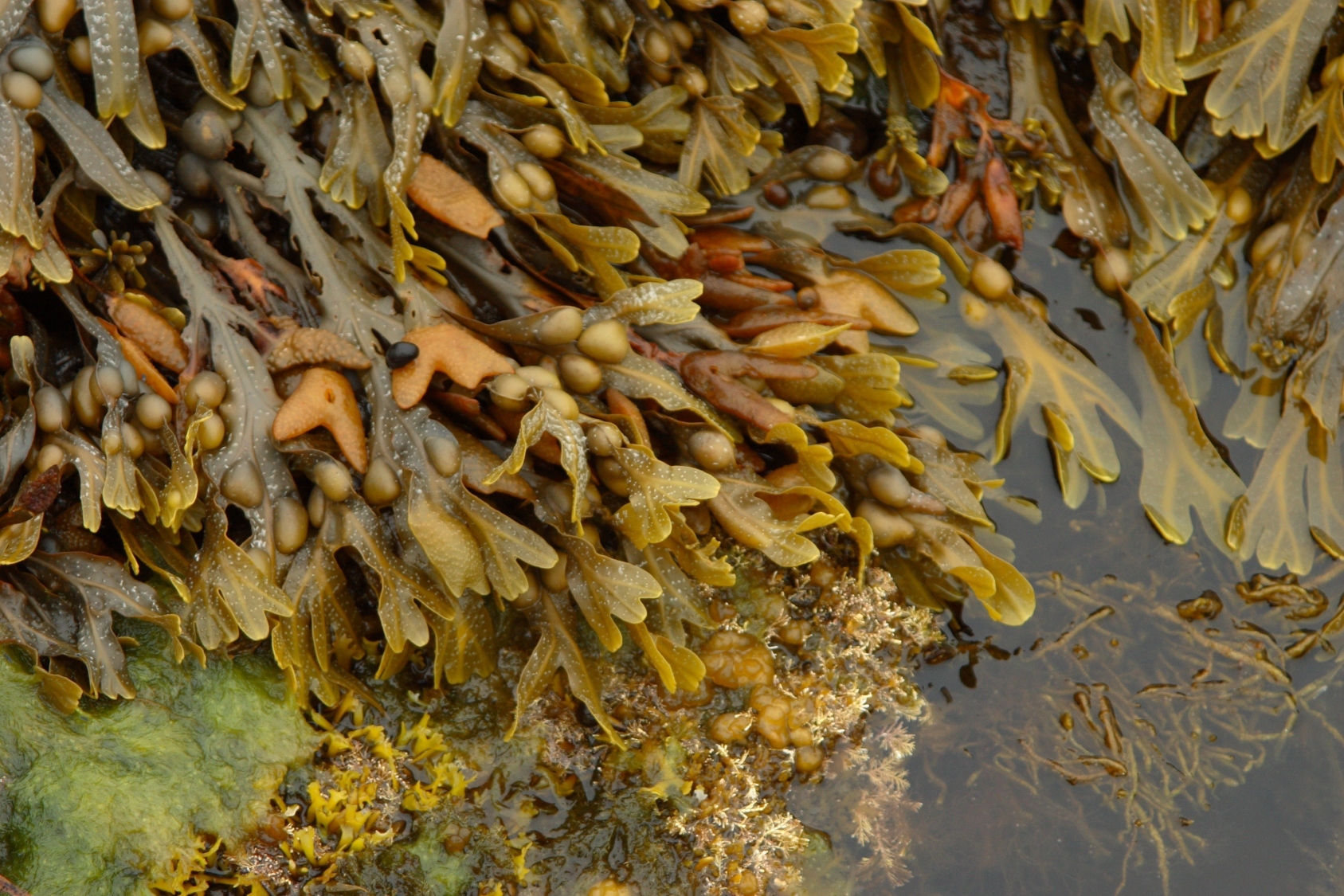
Properties
Fucus vesicles has anti-atherosclerotic, anti-inflammatory, antimicrobial, wound healing and endoecological effects on the body. It increases the activity of enzymes involved in the conversion of cholesterol into bile acids, prevents the deposition of cholesterol in the walls of blood vessels. At the same time, cholesterol biosynthesis is not disturbed, which eliminates the negative consequences of this process.
Fucus vesicularis effective in inflammatory diseases of the genitourinary system, with dysbacteriosis – inhibits the growth of pathogenic microflora. Algae components stimulate regenerative processes, promoting tissue granulation, epithelialization and scarring of wounds and ulcers. The combination of the antioxidant effect of the biologically active components of the algae with the enterosorption effect of alginic acid provides a radioprotective and detoxifying effect, including the removal of heavy metals from the body, including lead, mercury and radionuclides. Fucus vesiculosus also has an anticoagulant effect, contributes to the normalization of vascular permeability.
Fucus vesiculosus also has an anticoagulant effect, contributes to the normalization of vascular permeability.
Application
In homeopathy, fucus is used to regulate the function of the thyroid gland, with inflammation of the lymph glands, hardening of the glands, cancerous lesions of the glands, skin, scrotum, lungs and others, with obesity.
Fucus is used for hypovitaminosis of various nature, to normalize the functions of the thyroid gland, to cleanse the body of salts of heavy metals, to normalize metabolism, to restore the normal activity of the gastrointestinal tract, to increase immunity, with cancer prevention, with allergic reactions of various origins, to restore after illness and antibiotic treatment, in diseases of the respiratory, nervous and circulatory systems, for the prevention of obesity. Fucus lowers cholesterol levels in the blood, strengthens the walls of blood vessels, and has high antibacterial and antiviral activity.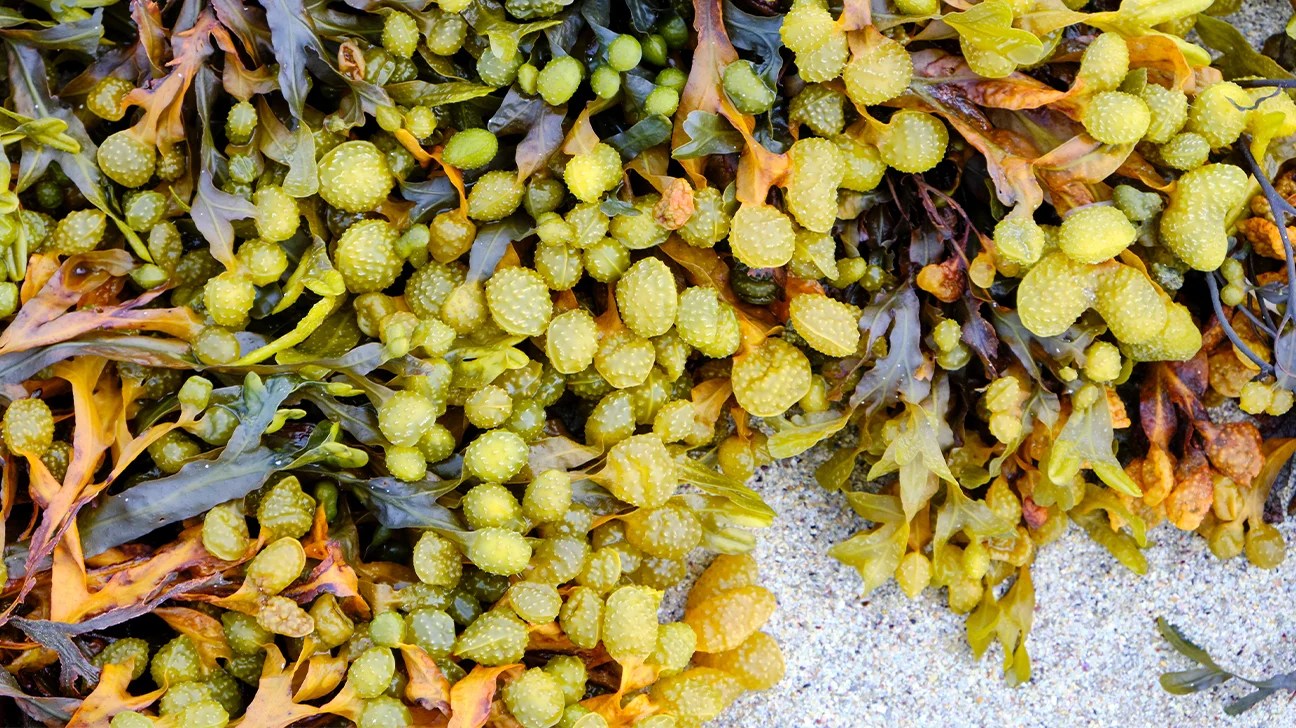
Included in the following preparations:
What is fucus? What are its miraculous properties?
Miraculous properties of fucus algae powder
Fucus is a very useful and quite demanded algae, which has not only a lot of useful properties, but also a pleasant and unusual taste.
This type of algae is very easy to distinguish from others: on its leaves there are small green bubbles, thanks to which the plant is upright under water.
Fucus grows almost anywhere on the planet, but its greatest accumulation is observed in the shallow waters of the Pacific and Atlantic oceans, in the northern and western parts of the Baltic Sea, in the Barents and White Seas.
Due to its unique properties, preparations from this algae are used in cosmetology, cooking, traditional and folk medicine.
What is the secret of fucus? Why is it so popular and useful?
The main unique property of fucus is that its composition of salts is maximally similar to the composition of human tissue fluid.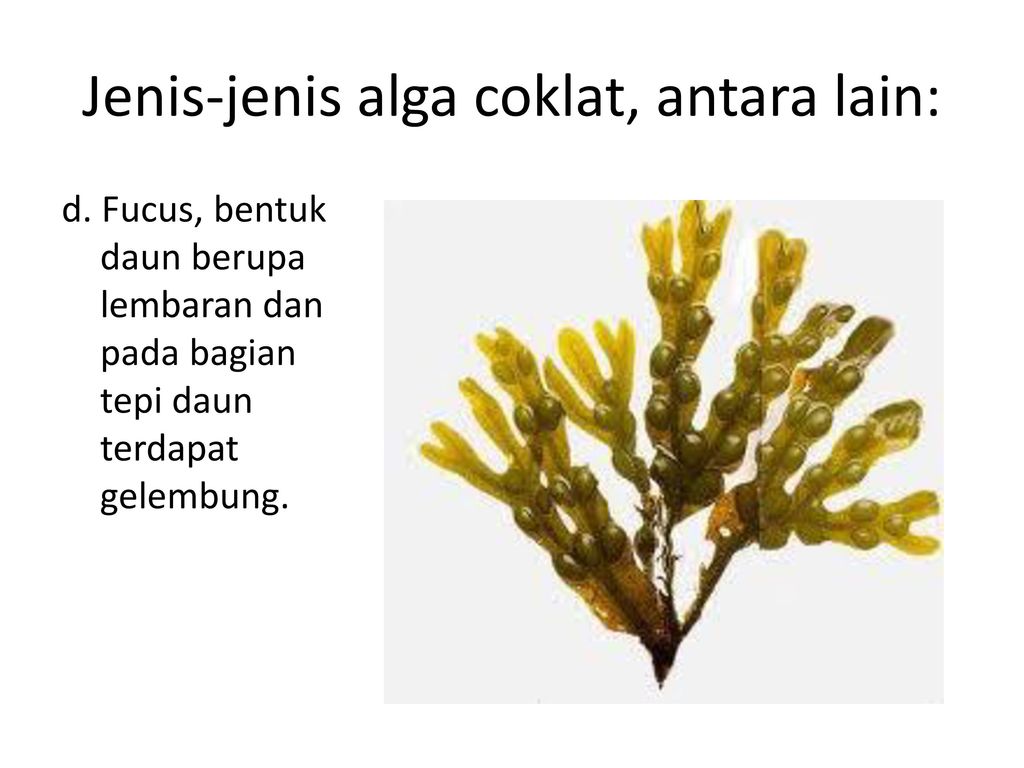 In addition, the chemical composition of the plant contains alginic acid concentrate, fucoidan and iodine.
In addition, the chemical composition of the plant contains alginic acid concentrate, fucoidan and iodine.
- Iodine increases efficiency and endurance, strengthens the nervous system, relieves unwanted weight, but most importantly, blocks the negative effects of the environment (including protecting and cleansing the body from radioactive contamination).
- Fucoidan made a real moral explosion and revolution in the pharmaceutical industry. Scientists have found that fucus, and in particular the powder from it, has powerful anti-inflammatory and anti-inflammatory properties. But most importantly, it has the ability to destroy low-quality oncological tumors. And this means that fucus powder is a promising tool for fighting cancer.
In addition, fucoidan, which is found in fucus powder, has a positive effect on blood composition, prevents the formation of thrombosis and prevents the development of diabetes, stabilizing blood sugar levels.
- Alginic acid absorbs water very well.
 It contains vitamins A, B, E, C, boron, sulfur, iron and about 25 more useful trace elements.
It contains vitamins A, B, E, C, boron, sulfur, iron and about 25 more useful trace elements.
The composition and beneficial properties of fucus
Useful trace elements that are part of the fucus powder help fight not only the common cold, but also more problematic diseases, including tuberculosis and cancer. For example, half a teaspoon of seaweed powder is enough to meet the daily requirement of iodine for three adults.
The positive effect of the powder on the human body is a beneficial effect on the endocrine system, which in turn affects the smooth and normal functioning of the whole organism.
During the last century, scientists have carried out many experiments aimed at investigating the effect of iodine on the human body. As a result, they found that taking iodine-containing foods, including fucus powder, can quickly lose weight. The fact is that the iodine contained in the plant accelerates the process of burning calories. The remaining minerals improve the absorption of fats and carbohydrates, reduce the feeling of hunger due to the fact that they swell in the human stomach.
Medical use
Fucus powder is used for slow metabolic processes, lowering blood sugar levels, maintains a feeling of satiety, breaks down fat deposits in tissues, stabilizes the intake of carbohydrates and fats after meals, and normalizes bowel function. In addition, fucus powder is a powerful detoxifier (clears the body of toxins) and improves immunity.
Fucus powder is used to make medicines that fight against:
- Overweight and obese;
- Constipation and other disorders in the gastrointestinal tract;
- Iodine deficiency in the body;
- Allergies, etc.
Fucus preparations are used not only internally. Various ointments are prepared from the powder of this algae, which help to heal minor cuts, various skin diseases, and even smooth out deep facial wrinkles.
Contraindications and possible harm
Excessive consumption of fucus powder can cause “non-fatal”, but rather unpleasant problems to the human body. An excess of iodine in the body can cause poisoning or malfunction of the endocrine system. In order to avoid such problems, before starting to take fucus preparations, it is necessary to consult with your doctor, having previously passed the tests.
An excess of iodine in the body can cause poisoning or malfunction of the endocrine system. In order to avoid such problems, before starting to take fucus preparations, it is necessary to consult with your doctor, having previously passed the tests.
It is strictly not recommended to take fucus powder or its other medicinal variants for pregnant women, lactating women, people with thyroid or hormonal disorders. It is also forbidden to take fucus for patients who will have surgery in the near future.
Fucus preparations should not be taken for more than 14 days. After the next course of eating algae, you need to take a break of several weeks.
How to take fucus powder by mouth
Three teaspoons is the daily intake of dried fucus.
It is forbidden to take dietary supplements, vitamin complexes and algae powder at the same time, and the use of fucus is also contraindicated if a person has an excess of iodine in the body.
Let’s take a look at a few recommended ways to take herbal preparations from a dry powder.

 Learn about the major environmental problems facing our planet and what can be done about them!
Learn about the major environmental problems facing our planet and what can be done about them! Taking Fucus vesiculosus along with medications that also slow blood clotting might increase the risk of bruising and bleeding.
Taking Fucus vesiculosus along with medications that also slow blood clotting might increase the risk of bruising and bleeding. This could change the effects and side effects of these medications.
This could change the effects and side effects of these medications.

 Aquatic Botany 2006;84:53-62.
Aquatic Botany 2006;84:53-62. J Applied Phycology 1998;10:121-129.
J Applied Phycology 1998;10:121-129.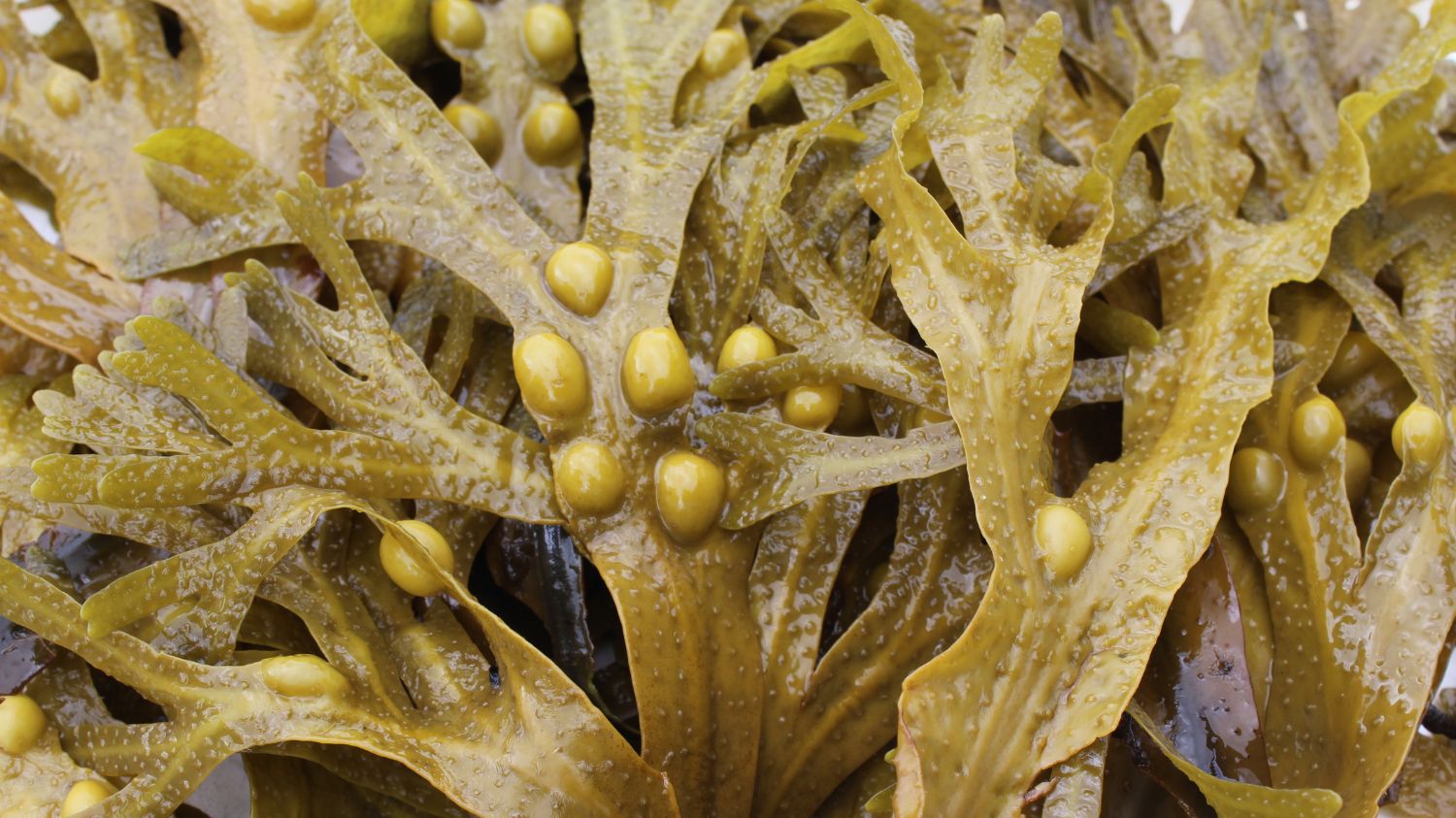 F. [Different therapies in the treatment of obesity in hypertensive patients]. Arq Bras.Cardiol. 1996;66:343-347. View abstract.
F. [Different therapies in the treatment of obesity in hypertensive patients]. Arq Bras.Cardiol. 1996;66:343-347. View abstract. T. and Ferreiros, C. M. Selective interaction of a Fucus vesiculosus lectin-like mucopolysaccharide with several Candida species. Ann Microbiol (Paris) 1983;134A:149-154. View abstract.
T. and Ferreiros, C. M. Selective interaction of a Fucus vesiculosus lectin-like mucopolysaccharide with several Candida species. Ann Microbiol (Paris) 1983;134A:149-154. View abstract. Kitasato Arch Exp Med 1987;60:105-121. View abstract.
Kitasato Arch Exp Med 1987;60:105-121. View abstract.
 [Fucus vesiculosus induced hyperthyroidism in a patient undergoing concomitant treatment with lithium]. Actas Esp.Psiquiatr. 2011;39:401-403. View abstract.
[Fucus vesiculosus induced hyperthyroidism in a patient undergoing concomitant treatment with lithium]. Actas Esp.Psiquiatr. 2011;39:401-403. View abstract.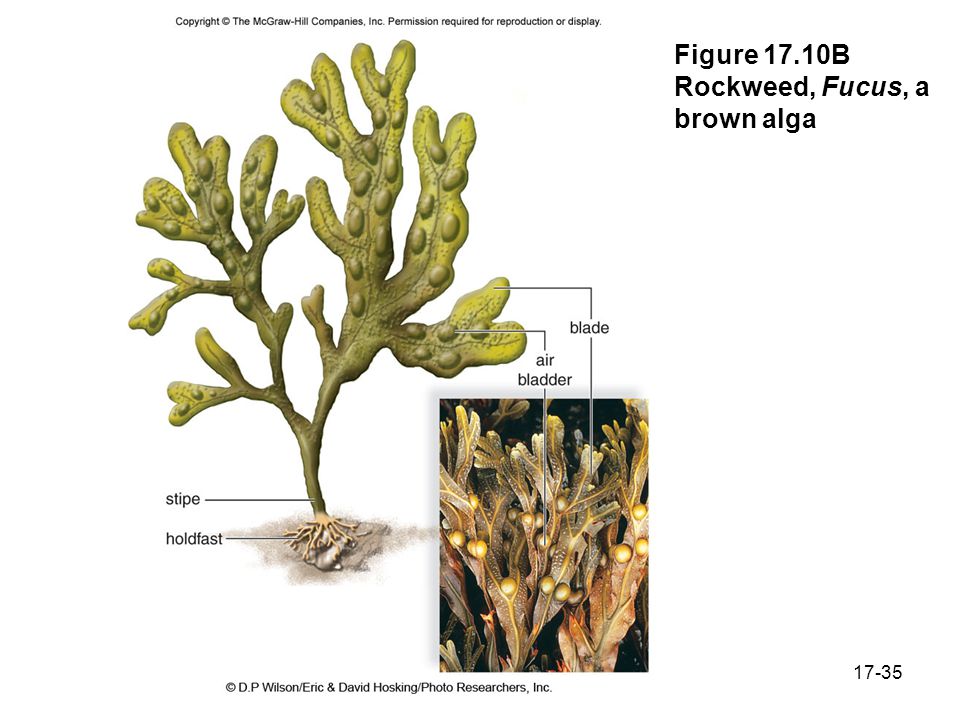 Obes.Rev. 2011;12:841-851. View abstract.
Obes.Rev. 2011;12:841-851. View abstract.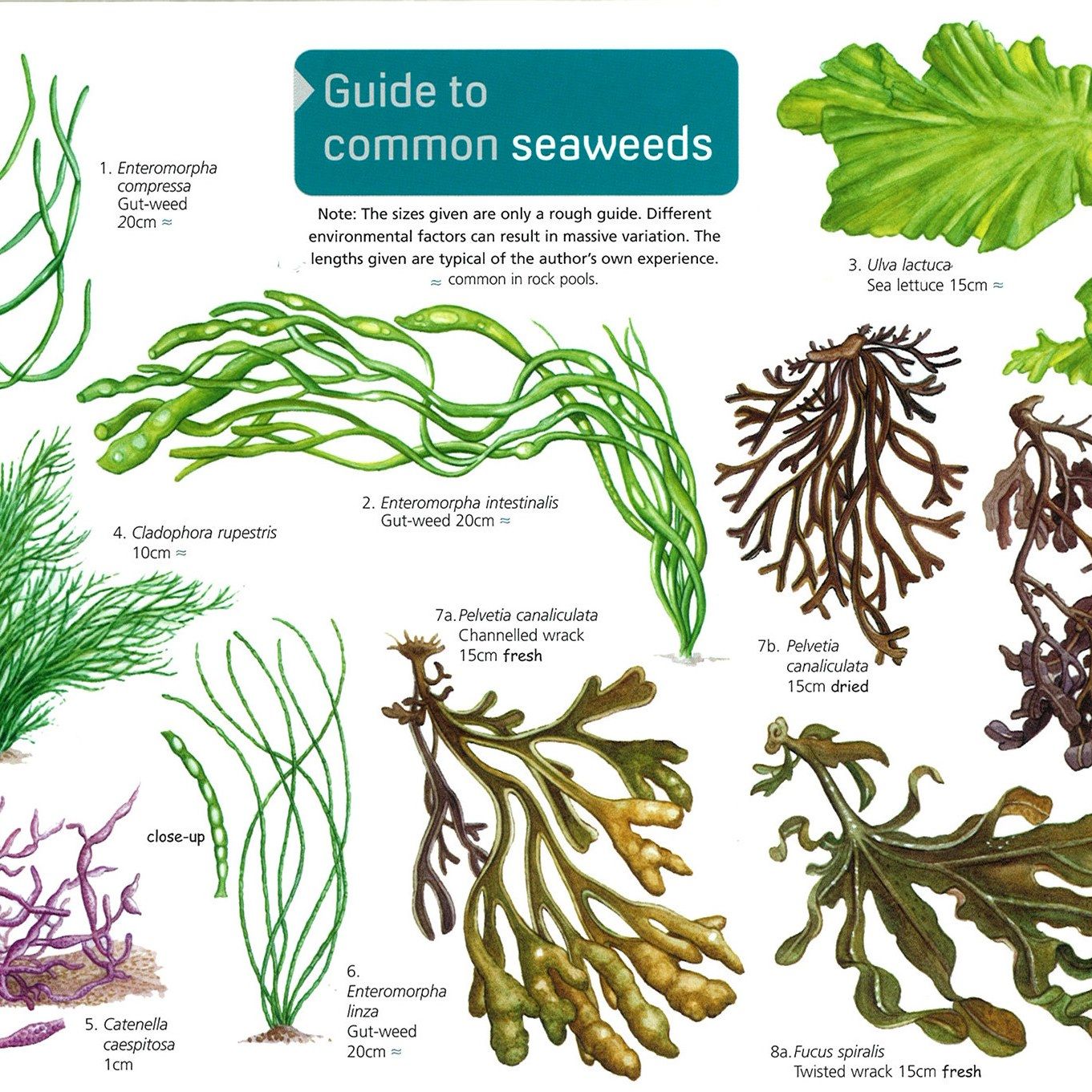 Antivir.Ther. 2011;16:89-98. View abstract.
Antivir.Ther. 2011;16:89-98. View abstract. Blood Coagul.Fibrinolysis 2009;20:607-610. View abstract.
Blood Coagul.Fibrinolysis 2009;20:607-610. View abstract. Cochrane.Database.Syst.Rev. 2008;:CD002106. View abstract.
Cochrane.Database.Syst.Rev. 2008;:CD002106. View abstract.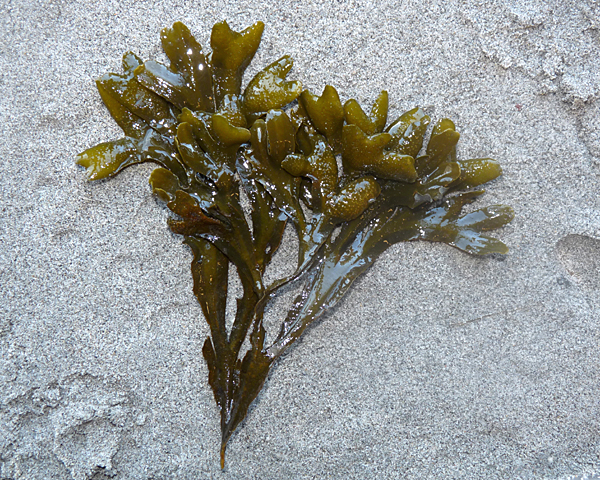 , Braverman, L. E., Kurzer, M. S., Pino, S., Hurley, T. G., and Hebert, J. R. Seaweed and soy: companion foods in Asian cuisine and their effects on thyroid function in American women. J Med Food 2007;10:90-100. View abstract.
, Braverman, L. E., Kurzer, M. S., Pino, S., Hurley, T. G., and Hebert, J. R. Seaweed and soy: companion foods in Asian cuisine and their effects on thyroid function in American women. J Med Food 2007;10:90-100. View abstract. Database.Syst.Rev. 2006;:CD001103. [RETRACTED]. View abstract.
Database.Syst.Rev. 2006;:CD001103. [RETRACTED]. View abstract. , and Mcneal, G. M. et al. Isolation of anticoagulant fractions from crude fucoidin. Proc.Soc.Exp.Biol.Med 1957;94:404-409. View abstract.
, and Mcneal, G. M. et al. Isolation of anticoagulant fractions from crude fucoidin. Proc.Soc.Exp.Biol.Med 1957;94:404-409. View abstract. Phytother.Res. 1999;13:627-629. View abstract.
Phytother.Res. 1999;13:627-629. View abstract. Potassium iodide in dermatology: a 19th century drug for the 21st century-uses, pharmacology, adverse effects, and contraindications. J Am Acad Dermatol 2000;43:691-7. View abstract.
Potassium iodide in dermatology: a 19th century drug for the 21st century-uses, pharmacology, adverse effects, and contraindications. J Am Acad Dermatol 2000;43:691-7. View abstract. Int J Obes 1987;11:67-71. . View abstract.
Int J Obes 1987;11:67-71. . View abstract.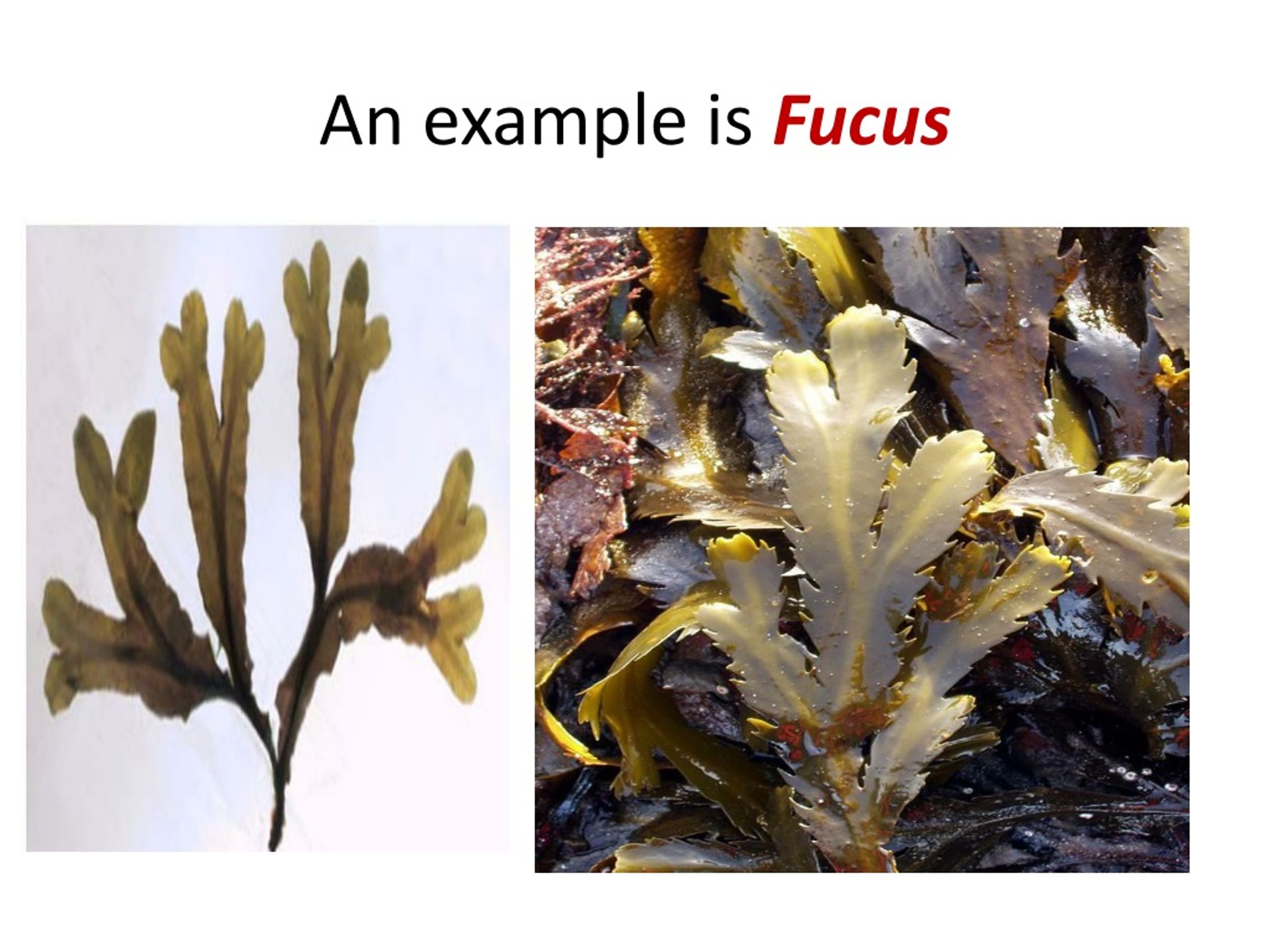 Biol Pharm Bull 2004;27:266-70. View abstract.
Biol Pharm Bull 2004;27:266-70. View abstract. BMC Complement Altern Med 2004;4:10. View abstract.
BMC Complement Altern Med 2004;4:10. View abstract. Bethesda, MD: American Society of Health-System Pharmacists, 1998.
Bethesda, MD: American Society of Health-System Pharmacists, 1998. It contains vitamins A, B, E, C, boron, sulfur, iron and about 25 more useful trace elements.
It contains vitamins A, B, E, C, boron, sulfur, iron and about 25 more useful trace elements.